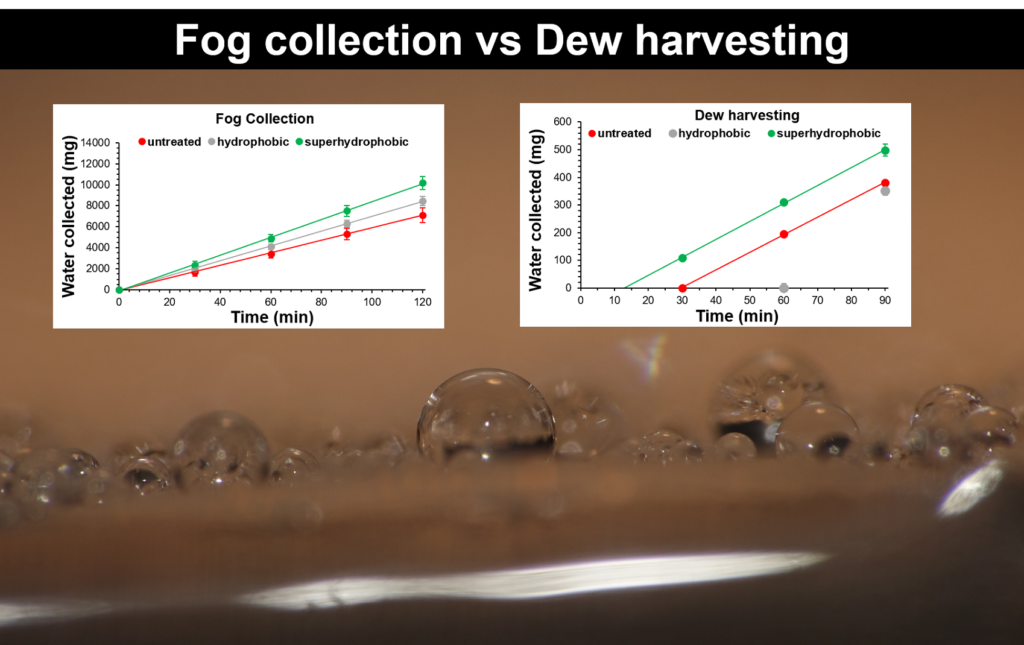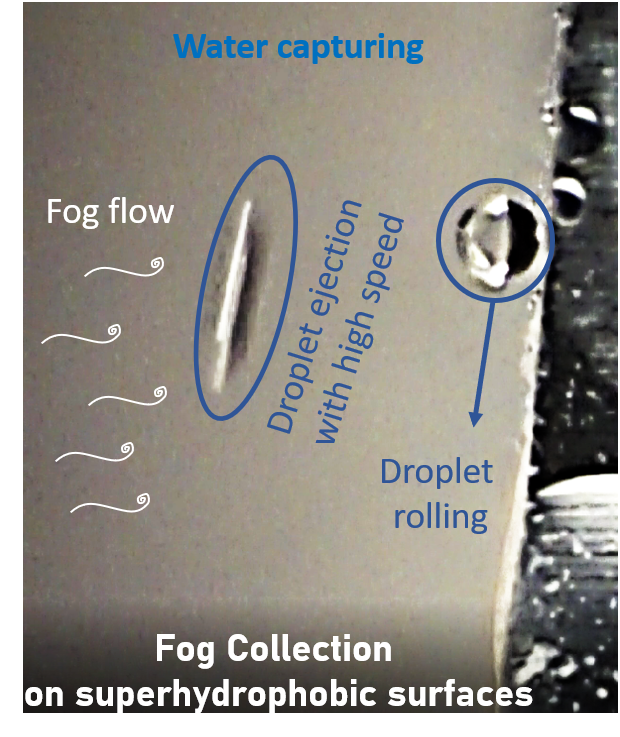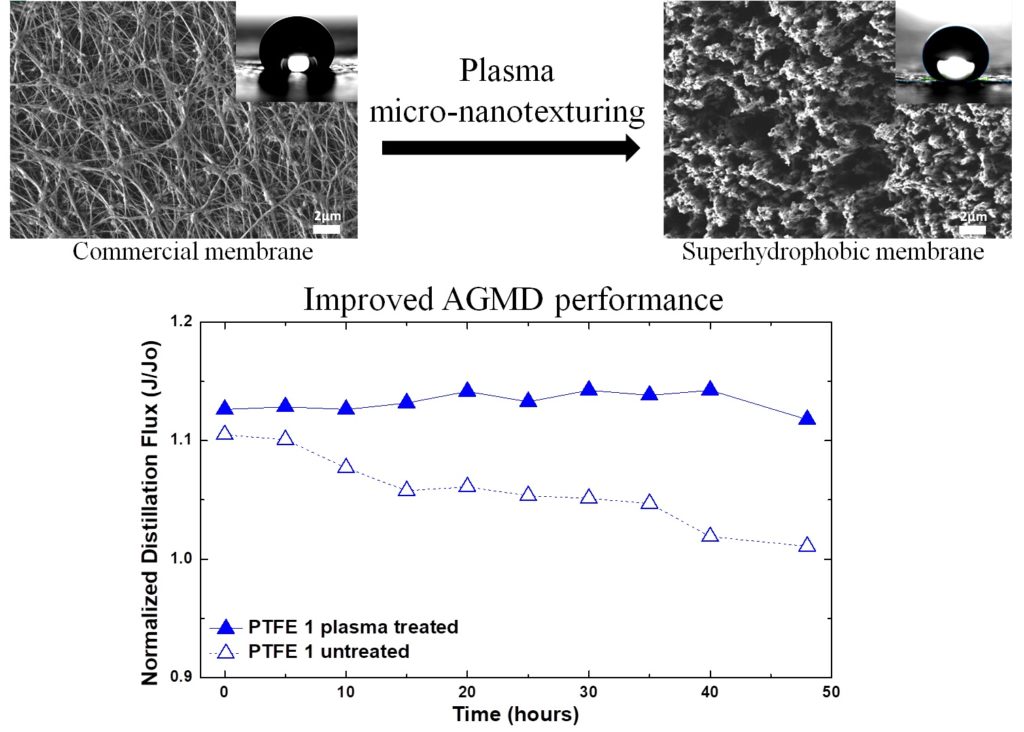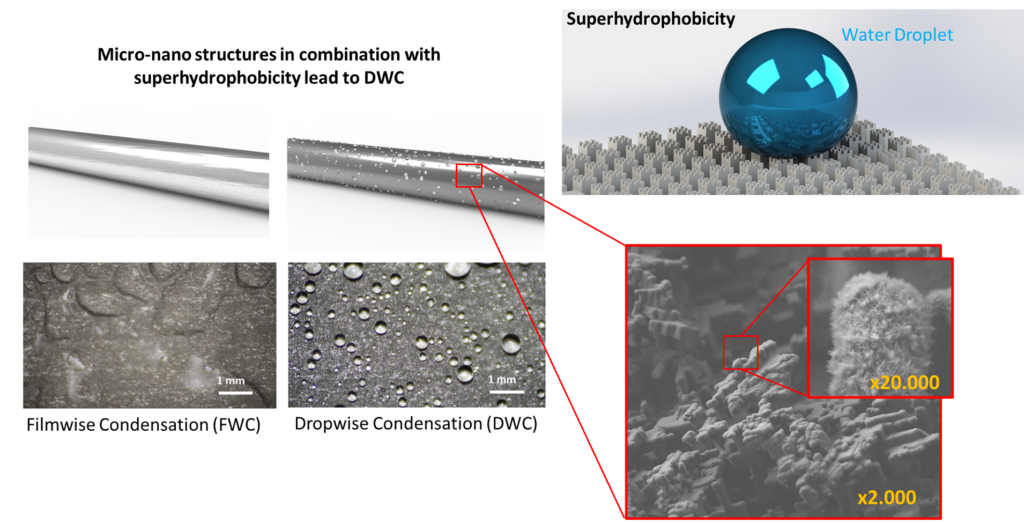Water and Energy Harvesting Surfaces and Devices
A. Water harvesting and recycling
We are very conscious of the acute water and energy shortage problems that the world is facing and will continue to face in the years to come. Thus, we have initiated activities on water and energy harvesting and water recycling. On one hand we used superhydrophobic surfaces or biphilic surfaces to harvest water from the atmosphere either actively via condensation, or passively via fog water collection. The use of superwetting surfaces highly increases the amount of water collected. We have unraveled the differences in collection and performance of the surfaces in dew and fog mode.
Aiming to tackle the water recycling problem we are actively working with polymeric membranes which we render superhydrophobic and use for membrane distillation. We have observed a dramatic improvement in the membrane performance using plasma nanotextured superhydrophobic membranes.




B. Energy efficient condensation and solar energy harvesting
Dropwise condensation rather than filmwise condensation is achieved on Superhydrophobic metallic or polymer coated metallic surfaces. The use of dropwise condensation greatly reduces the temperature difference between steam and cold surface thus highly increasing energy savings. On the energy saving front we also use plasma etching to fabricate Silicon nanowire solar cells with axial or radial p-n junctions that show promise as cheaper and more efficient alternative solar cells. Below we show Silicon nanopillars fabricated with cryogenic etching with radial p-n junction used as photovoltaic devices. Similar work with axial p-n junctions has also been conducted. This activity has been hit by the global downfall of silicon solar cells, however, it has added a significant know how in our group and has been a model of collaboration with the plasma lab and the clean room facility of INN.

